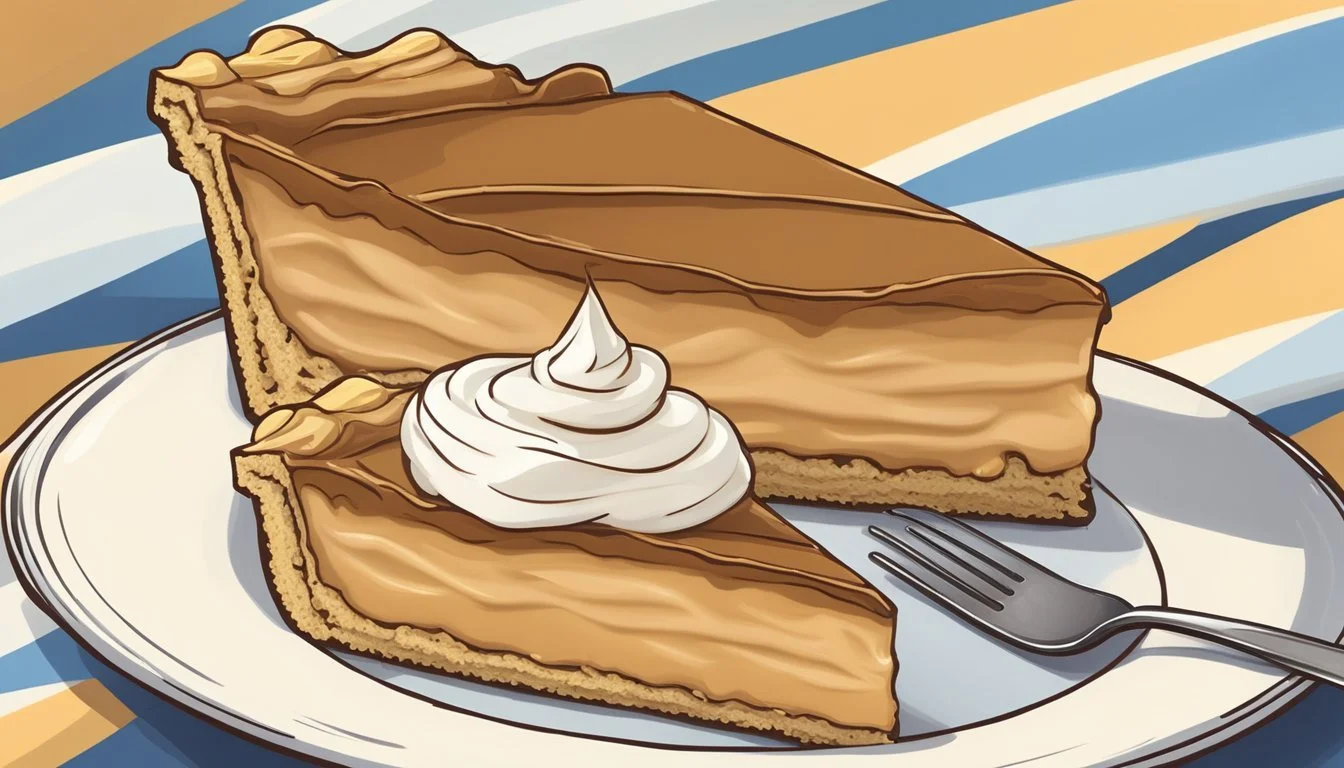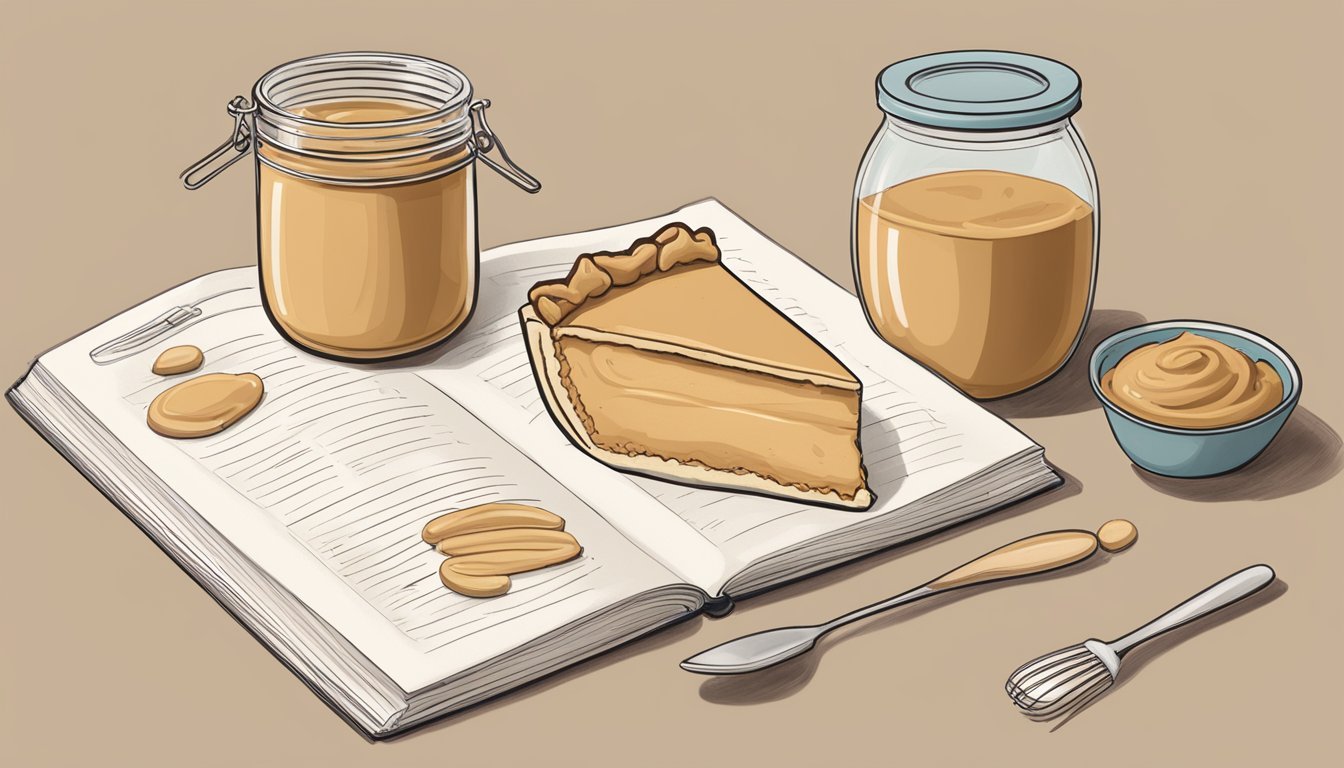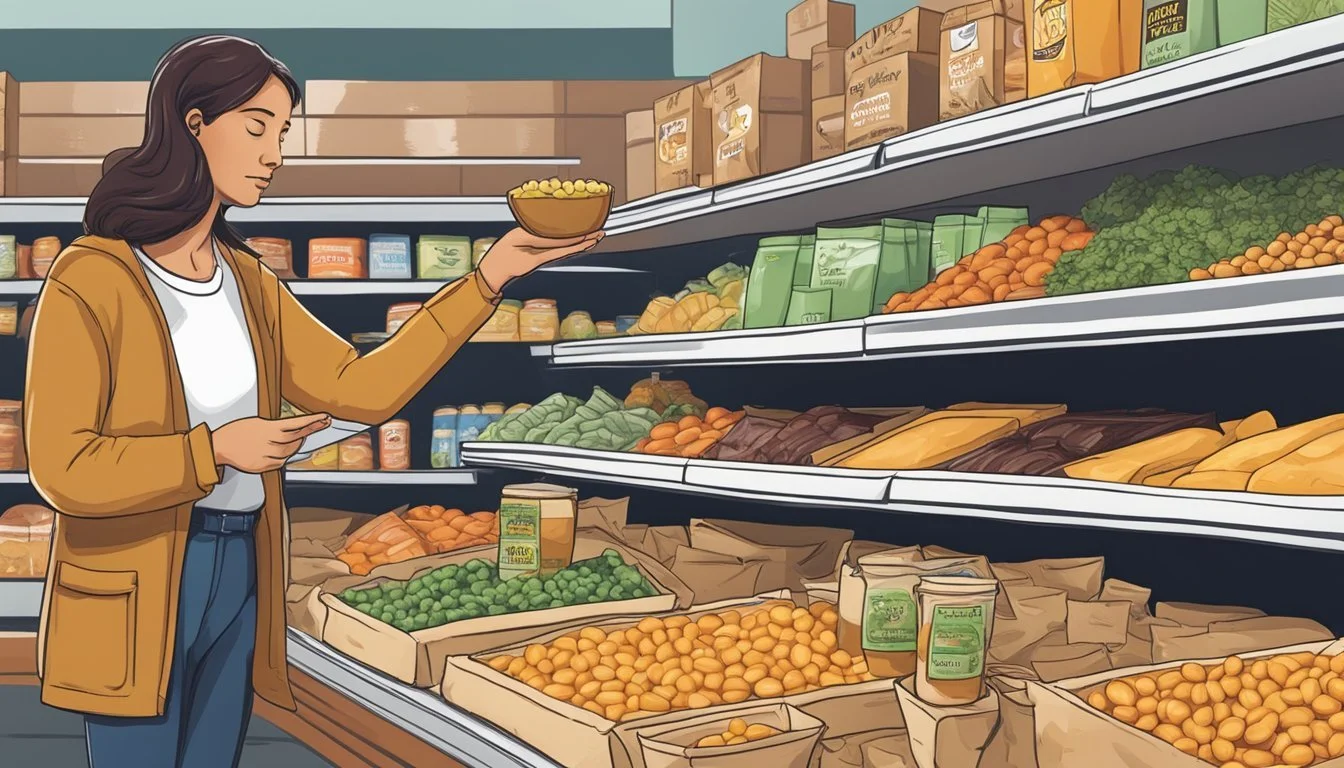Is Peanut Butter Pie Vegan?
Unveiling The Truth About This Dessert
Peanut butter pie traditionally features a creamy filling that often includes cream cheese, peanut butter, whipped cream, and a sweetener—all nestled in a crunchy crust made from cookie crumbs and butter. However, in its classic form, this dessert is not vegan due to ingredients such as dairy butter and cream cheese. As veganism grows in popularity, many bakers and recipe developers have created adaptations of this beloved dessert to cater to plant-based diets, ensuring that the pie does not contain any animal-derived ingredients.
Vegan peanut butter pie is a plant-based version of the dessert, substituting dairy products with alternatives like vegan butter, plant-based milk, and vegan cream cheese. The filling is designed to mimic the texture and flavor of traditional peanut butter pie, while adhering to vegan standards. Crusts are often made from crushed vegan-friendly cookies mixed with vegan butter, and some versions are baked briefly to set, while others are no-bake and simply chilled to achieve the desired texture.
Interest in vegan peanut butter pie is part of a broader trend towards plant-based eating, which embraces the inclusion of desserts in a diet free from animal products. With the availability of numerous vegan substitutes for traditional ingredients, this dessert is a testament to the versatility and creativity within plant-based cuisine. It allows those following a vegan lifestyle to enjoy a rich and indulgent treat without compromising their dietary choices.
Understanding Veganism
When dissecting veganism, particularly in the context of culinary choices like peanut butter pie, one must consider the constraints on ingredients and the impact of these choices on nutritional intake.
Defining Vegan Ingredients
Vegan ingredients are those which are not derived from animals and encompass a variety of plant-based items. This includes avoiding all dairy and egg products. For a peanut butter pie to be considered vegan, every component must be dairy-free and egg-free. Traditional crusts might use butter, but alternative crusts could utilize vegan butter or oils. Similarly, the creamy texture often achieved with dairy in conventional pies must be substituted with plant-based milks or coconut cream.
Health Benefits and Nutritional Information
Veganism often associates with potential health benefits due to a higher intake of certain nutrients. However, one should not assume that all vegan foods are automatically healthier. It is essential to assess the nutritional information of any vegan treat, including a peanut butter pie. While nutritional content can vary, here is an example of what a slice of vegan peanut butter pie might contain:
Nutrient Average Amount per Serving Calories 400-600 Carbohydrates 30-50g Protein 7-10g Fat 25-35g Saturated Fat 5-10g Sodium 200-400mg Fiber 3-5g Potassium 300-500mg Calcium 2-4% of daily value Iron 10-15% of daily value
A vegan peanut butter pie will be rich in calories and fat, given the primary ingredient of peanut butter, but it may also offer beneficial nutrients such as fiber, potassium, calcium, and iron. The absence of animal-based ingredients means no cholesterol and often lower levels of saturated fat. Each ingredient contributes to the overall nutritional profile, which can be tailored to suit different health goals.
Components of Peanut Butter Pie
Creating a vegan peanut butter pie involves selecting the right ingredients that both align with a vegan diet and offer the desired textures and flavors. Each component plays a crucial role in the overall taste and structure of the pie.
Peanut Butter Varieties and Selection
Vegan peanut butter pie begins with selecting the optimal peanut butter. Creamy peanut butter is often used for a smooth filling, while natural peanut butter ensures the absence of added sugars or oils. Alternatives such as almond butter, cashew butter, or other nut and seed butters provide different flavor profiles and nutritional benefits. For those with allergies, seed butter like sunflower seed butter is a viable option.
Chocolate and Its Alternatives
Chocolate enhances the richness of peanut butter pies. Vegan options include cocoa powder, vegan chocolate chips, or vegan chocolate sauce. For a decadent layer or drizzle, vegan ganache made from melted chocolate and plant-based milk can be used. Chocolate elements are not just limited to fillings but also included in crusts such as a chocolate cookie crust made from vegan cookies.
Sweeteners and Flavor Enhancers
To achieve the desired sweetness, various sweeteners are utilized such as sugar, powdered sugar, or liquid sweeteners like maple syrup. Many opt for sugar-free alternatives in line with dietary preferences. Vanilla extract is a common flavor enhancer, contributing to the pie's depth of flavor without overwhelming the peanut butter and chocolate profiles.
Essential Fats and Oils
The richness of peanut butter pie is partially due to the fats used, commonly vegan butter or coconut oil. These fats help solidify the filling and crust. Melted vegan butter combines with cookie crumbs for the crust, and some recipes may call for melted peanut butter to enhance the filling's creaminess.
Binding Agents and Dairy Substitutes
Traditional pies often use dairy as binders. Vegan versions employ substitutes like tofu—usually silken tofu for smoothness—, vegan cream cheese, or coconut cream. These ingredients help achieve the pie's signature texture and firmness after setting.
The Role of Crust in Pies
The crust is foundational to any pie's structure. Options range from a traditional graham cracker crust to a chocolate-based Oreo crust. For gluten-free needs, crusts may be made with almond flour or gluten-free Oreo cookies. The crust should complement the filling in flavor and texture, serving as a crunchy counterpoint to the creamy filling.
Preparation and Techniques
Creating a delectable vegan peanut butter pie involves specific techniques to ensure a delicious outcome while abiding by vegan dietary requirements. A key to success is in the methodical assembly and understanding the adaptability of ingredients for various dietary needs.
Creating a No-Bake Pie
For a no-bake vegan peanut butter pie, one starts with preparing the crust. Most often, this involves combining ingredients such as crushed cookie crumbs with melted vegan butter. The mixture is then pressed firmly into a pie dish and set in the freezer for a solid base. The filling, typically a blend of peanut butter with vegan cream cheese or coconut cream, is whipped until fluffy and spread onto the chilled crust. The entire preparation process bypasses the oven, utilizing the freezer to firm the pie.
Pie Decoration and Toppings
Decorative toppings not only enhance visual appeal but also add texture and flavor. Vegan whipped cream or coco whip serve as a creamy topping. For crunch and aesthetics, sprinkle crushed peanuts or add vegan peanut butter cups. These elements should be added after the pie has set to prevent them from sinking into the filling.
Expert Tips and Substitutions
Substitutions: Vegan cream cheese can be swapped for silken tofu to maintain creaminess with a healthier twist. Agave syrup or maple syrup can replace refined sugars.
Expert Tips: To achieve the right consistency, blend the filling ingredients in a food processor or high-speed blender until smooth. Use a spatula to scrape the sides for an even mix. For an easy substitution, coconut whipped cream can be used instead of traditional whipped cream toppings.
Serving and Storage
For optimal taste and texture, a vegan peanut butter pie should be served chilled. It can be stored in the refrigerator to maintain its freshness for 2-3 days. If one desires to keep the pie longer, it can be frozen and enjoyed as a frozen dessert. To serve after freezing, allow the pie to sit at room temperature briefly to soften. Leftovers should be kept covered to prevent drying out.
Recipes and Variations
In exploring vegan peanut butter pie recipes and their variations, one will find that the dessert can be rich and creamy with a distinct chocolate cookie crust base. Adjusting textures, incorporating new flavors, and adding ingredients like peanut butter cups customize the pie to personal tastes.
Classic Vegan Peanut Butter Pie Recipe
The classic recipe for a vegan peanut butter pie begins with a chocolate cookie crust, commonly made from crumbled Oreo cookies mixed with melted vegan butter. This crust is then pressed into a pie dish and set in the freezer. For the filling, ingredients like peanut butter, vegan cream cheese, and sweeteners are blended until creamy and spread over the crust. Some recipes suggest adding a layer of melted chocolate or chocolate chips for an extra chocolatey touch. The pie is usually refrigerated until firm.
Crust Ingredients:
Vegan chocolate cookies, crushed
Vegan butter, melted
Filling Ingredients:
Vegan cream cheese
Powdered sugar or other sweeteners
Vanilla extract (for added flavor)
Optional:
Melted chocolate or chocolate chips
Texture and Consistency Adjustments
To achieve the desired richness and creaminess, one may need to adjust the amounts of peanut butter and vegan cream cheese. For a firmer texture, additional time in the refrigerator or even freezing the pie before serving could be necessary. Conversely, for a softer consistency, reducing the chilling time will suffice. Some prefer their peanut butter pie to have a mousse-like texture, which can be achieved by folding in whipped coconut cream into the filling.
For firmer texture:
Increase chilling time
Consider freezing before serving
For softer texture:
Decrease chilling time
For mousse-like texture:
Fold in whipped coconut cream into the filling
Creative Flavor Twists and Additions
Incorporating creative flavor twists and additions can transform a classic vegan peanut butter pie into a unique dessert. Adding chopped vegan peanut butter cups into the filling or as a garnish adds extra peanut butter flavor and a pleasant crunch. Incorporating a swirl of chocolate ganache or a sprinkle of sea salt can enhance the flavor profile. Some choose to blend in banana or coconut for a tropical twist. Swapping out the vanilla extract for almond extract creates a nuanced taste difference that can be quite delightful.
Add-ins for extra flavor:
Chopped vegan peanut butter cups (in filling or as garnish)
Chocolate ganache swirl
Sea salt sprinkle
Flavor twists:
Banana or coconut for a tropical flavor
Almond extract instead of vanilla for a nuanced flavor change
Equipment and Tools Required
When preparing a vegan peanut butter pie, chefs will benefit from having a well-equipped kitchen. The utilization of the correct equipment ensures a smooth preparation process.
Essential Equipment:
Blender/Food Processor: A blender or food processor is crucial for creating a fine, even crumb base from cookies if making a crust from scratch. It is also required to blend filling ingredients to achieve a creamy texture.
Pie Pan: A 9-inch pie pan, preferably a springform pan, is recommended for easy removal of the pie once set.
Additional Tools:
Spatula: A spatula assists in evenly spreading the crust and filling, as well as scraping out blending containers to minimize waste.
Spoon: A spoon is useful for mixing ingredients, especially if combining melted vegan butter with cookie crumbs for the crust.
Mixer: If the recipe calls for whipped toppings or fillings, a hand mixer or stand mixer will be instrumental in achieving the desired fluffiness and lightness.
List of Tools for Preparation:
Tool Purpose Blender/Food Processor Blend crust and filling Pie Pan (Springform Pan preferred) Shape and hold the pie Spatula Spread and scrape ingredients Spoon Mix and stir ingredients Hand Mixer/Stand Mixer Whip toppings or fillings
Chefs should ensure that all equipment and tools are clean and in working order before beginning the pie-making process. This ranges from a simple spoon to a more complex stand mixer, each playing its part in crafting a delicious vegan peanut butter pie.
Time Management
When preparing a vegan peanut butter pie, time management is crucial for both efficiency and the optimal outcome of the dessert. This pie generally comes in two varieties: baked and no-bake. Depending on the chosen method, the total time and prep time can vary significantly.
For a No-Bake Vegan Peanut Butter Pie:
Prep Time: The crust can be assembled quickly by combining ingredients such as Oreo cookie crumbs and vegan butter, an example of a step that can be done within minutes. The filling, made from ingredients like peanut butter, coconut cream, and maple syrup, usually requires blending until smooth but is also a quick process.
*Total Time includes a setting or chilling period required to solidify the pie. A typical no-bake pie may need several hours in the freezer or refrigerator to set properly, making advance preparation advisable.
For a Baked Vegan Peanut Butter Pie:
Prep Time: A baked crust might require pre-baking for about 7 to 20 minutes after pressing the crust mixture into the pie dish. After pre-baking, the crust must cool down before adding the filling.
*Total Time encompasses the baking of the crust, cooling period, and possible additional baking with the filling. Including cooling and setting times, a baked vegan peanut butter pie could require a few hours from start to finish.
Type Prep Time Additional Time Total Time No-Bake Pie 20 mins Several hours (setting) 4+ hours (approx.) Baked Pie 20 mins Baking and cooling: 2 hours 3+ hours (approx.)
Time-Saving Tips:
Prepare the crust in advance and store it in the refrigerator or freezer to save time on the day of assembly.
Read through the recipe to schedule simultaneous tasks such as setting the crust while preparing the filling.
Use a food processor for efficient blending and mixing of ingredients, minimizing manual effort and time.
Afterthoughts and Consumer Habits
When considering the popularity of vegan peanut butter pie, consumer trends reflect an increasing demand for plant-based desserts. Many people prefer organic ingredients for their perceived health benefits and eco-friendly attributes. Products like organic peanut butter and plant-based ingredients are often sought after in health food stores and mainstream supermarkets, including Trader Joe’s, which is known for catering to health-conscious shoppers.
While some consumers opt for organic versions of the ingredients, others focus on taste and convenience. Brands like Justin's offer ready-made peanut butter that is both vegan and available in organic options, aligning with the desires of consumers who prioritize both plant-based and organic attributes.
The transition of peanut butter pie to a vegan-friendly dessert is facilitated by the availability of vegan alternatives for traditional ingredients like butter and cream. Vegan butter can be found in many supermarkets, aligning with the shift towards plant-based options. Oreo cookies, surprisingly vegan, are a common ingredient for the crust, appealing to those seeking accessible and familiar ingredients.
Here's a quick reference for consumer preferences:
Ingredients Chosen: Organic vs. Non-organic
Popular Brands: Trader Joe's and Justin’s
Dessert Type: No-bake vs. Baked
Main Ingredient: Peanut Butter – Organic preferred
Crust Base: Oreo Cookies – Frequently used for vegan crusts
Dairy Alternatives: Vegan butter and coconut cream for dairy substitutes
Consumers are not only interested in the vegan aspect but also in how the pie fits into their broader dietary patterns. The growth of eco-conscious consumer behaviors influences purchasing decisions, reinforcing the relevance of vegan peanut butter pie in the dessert market.








